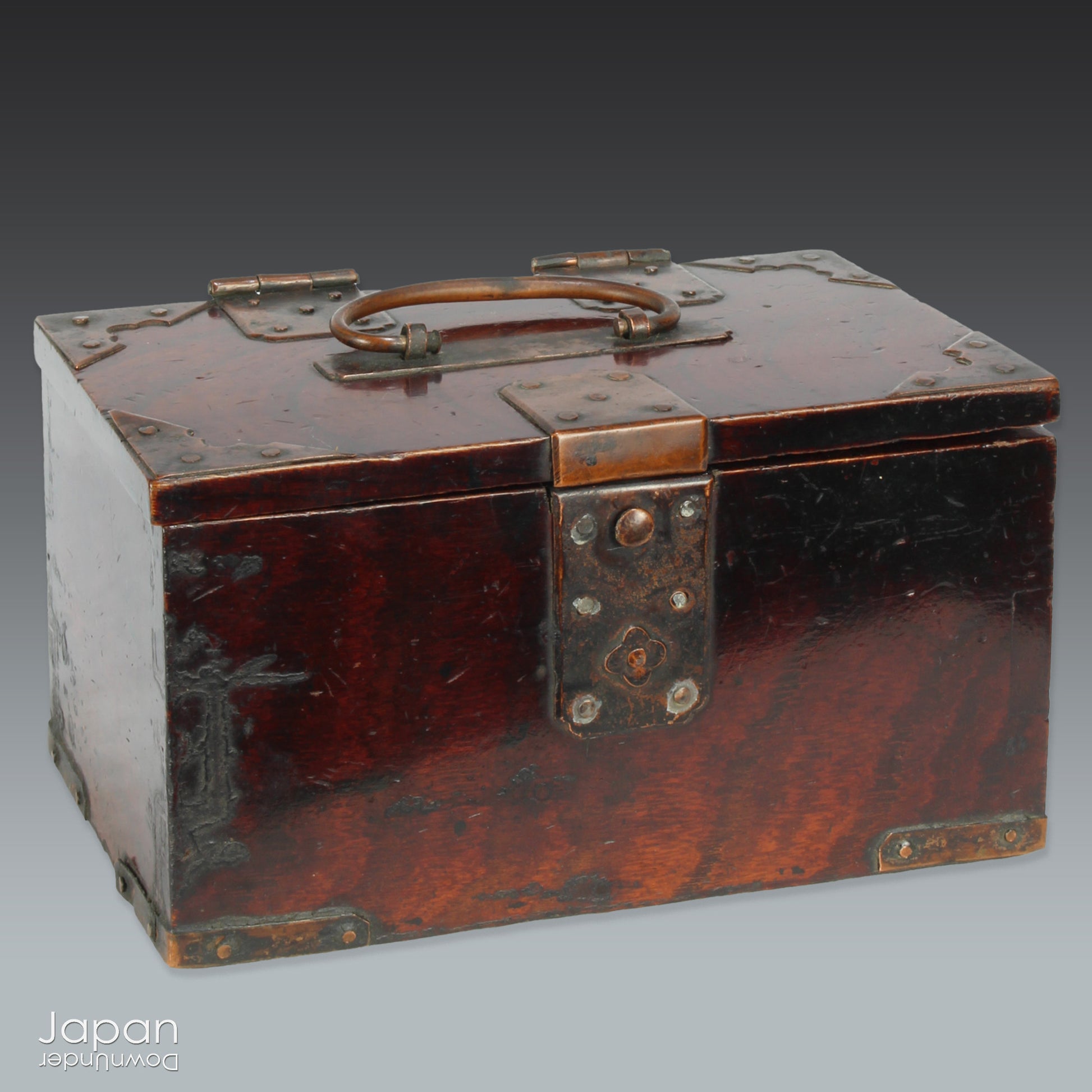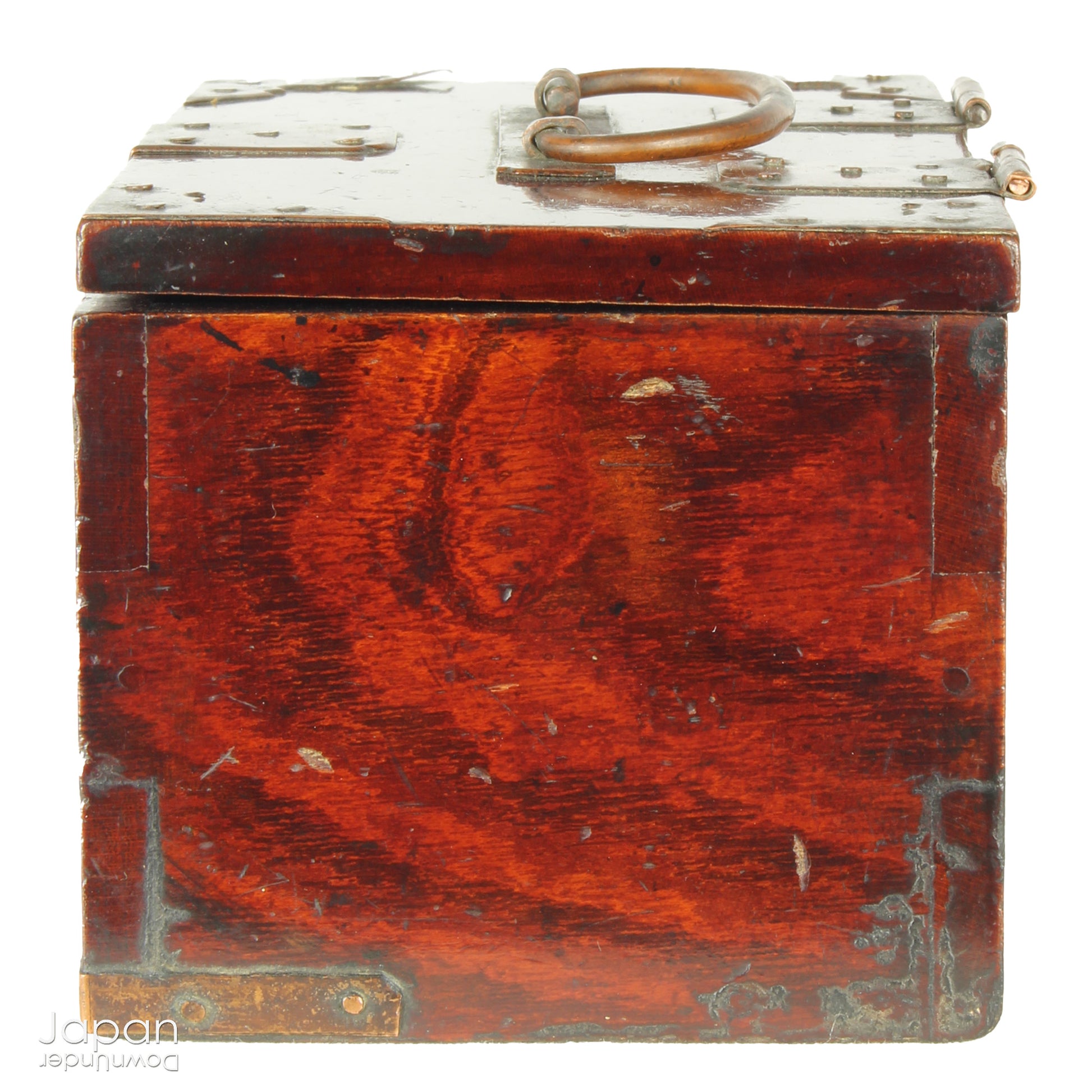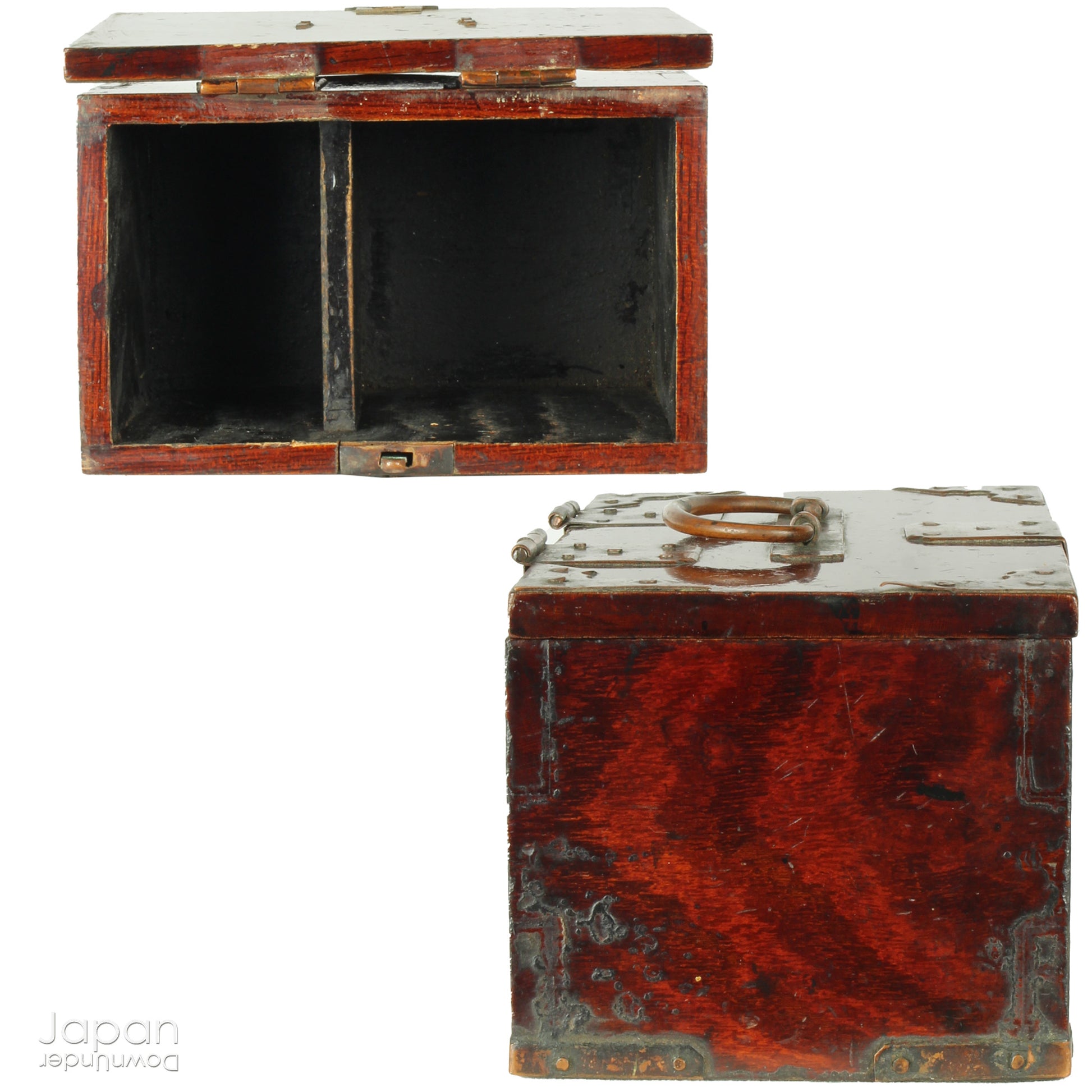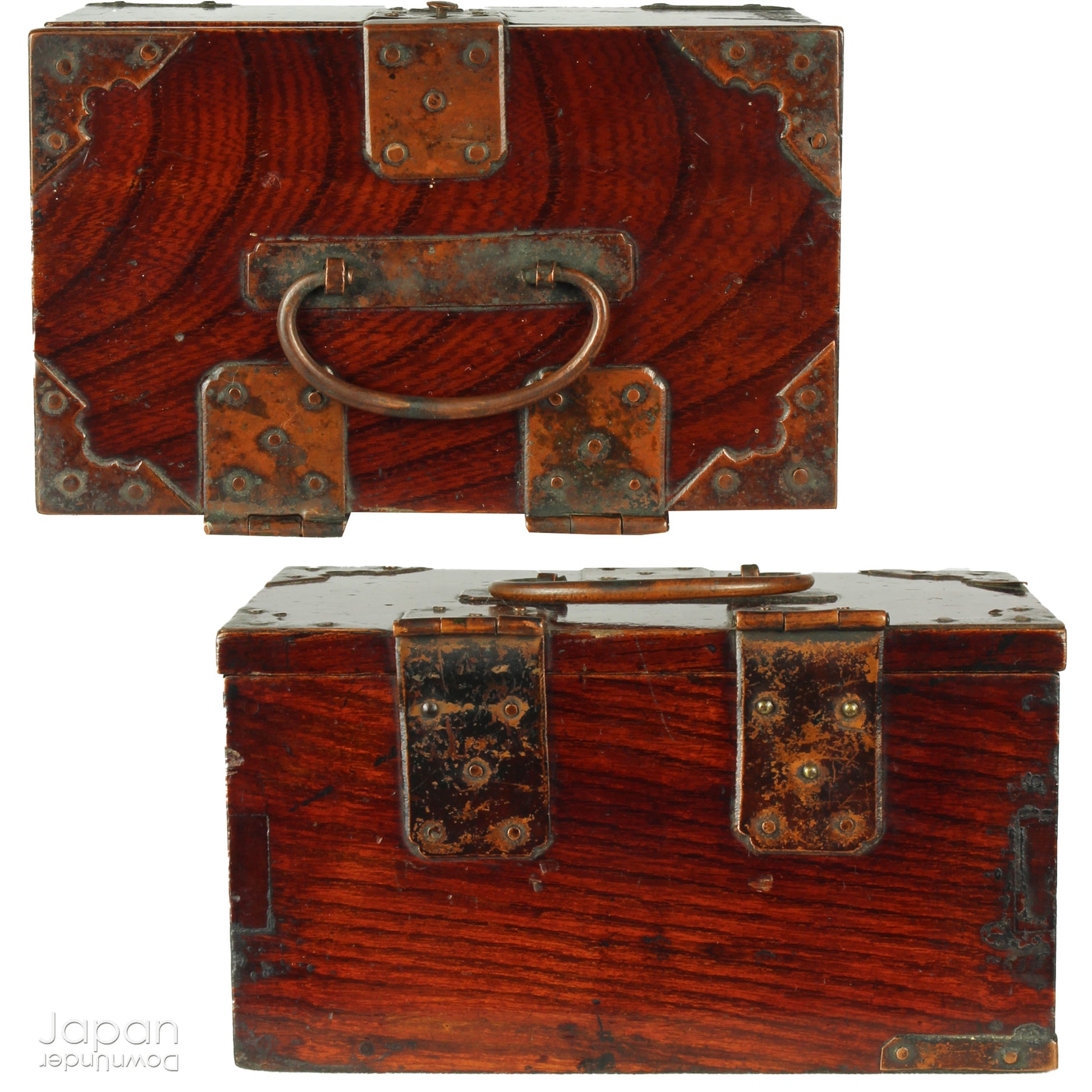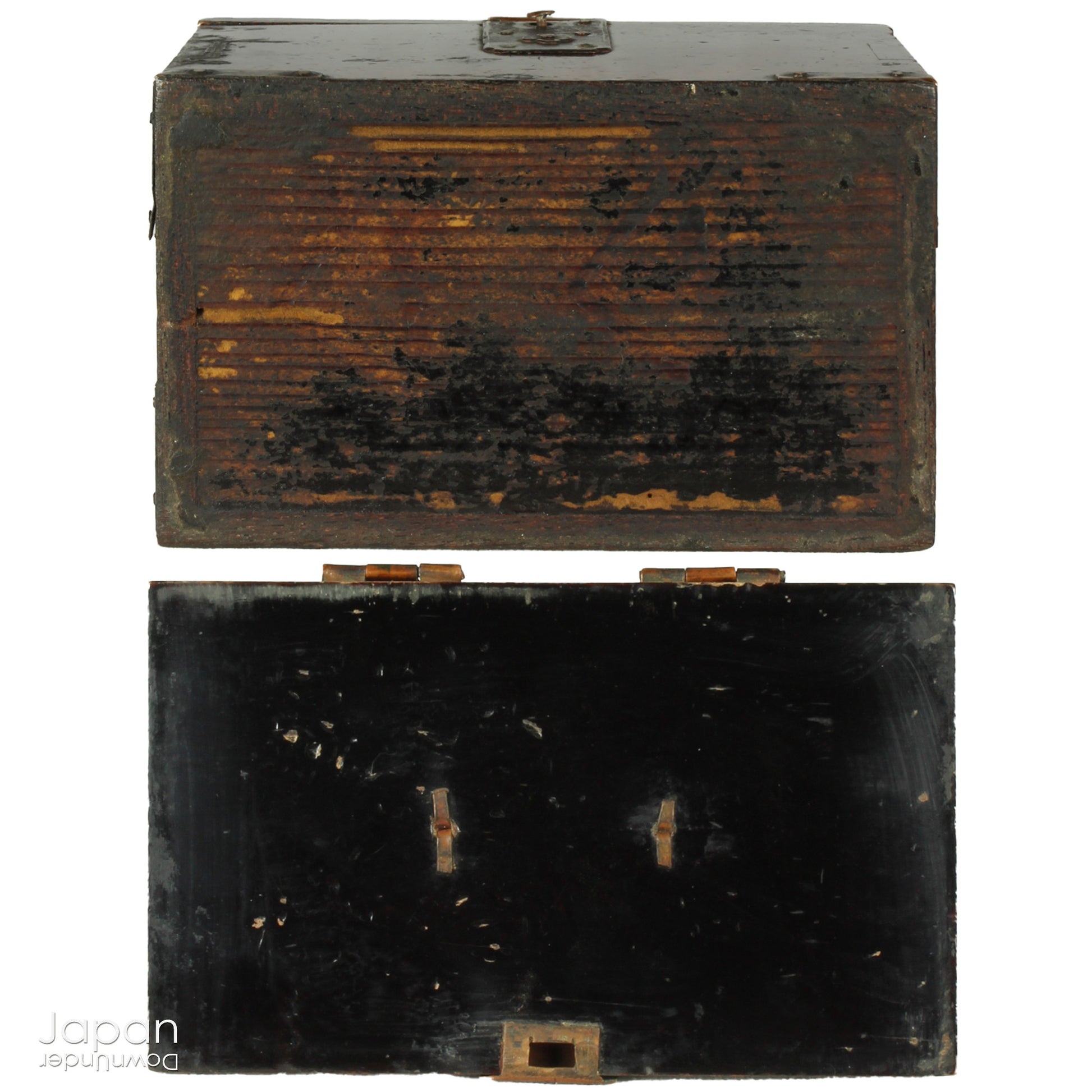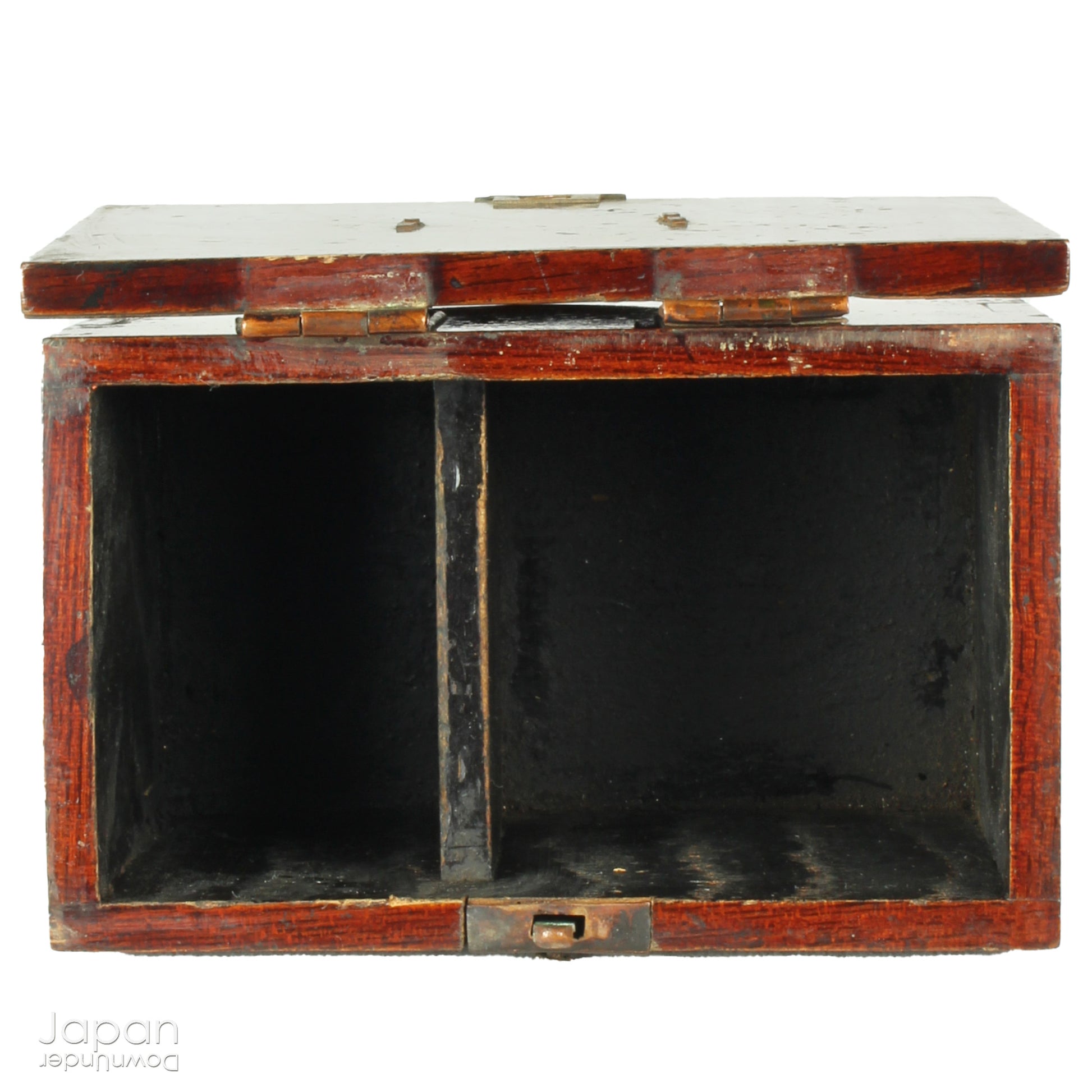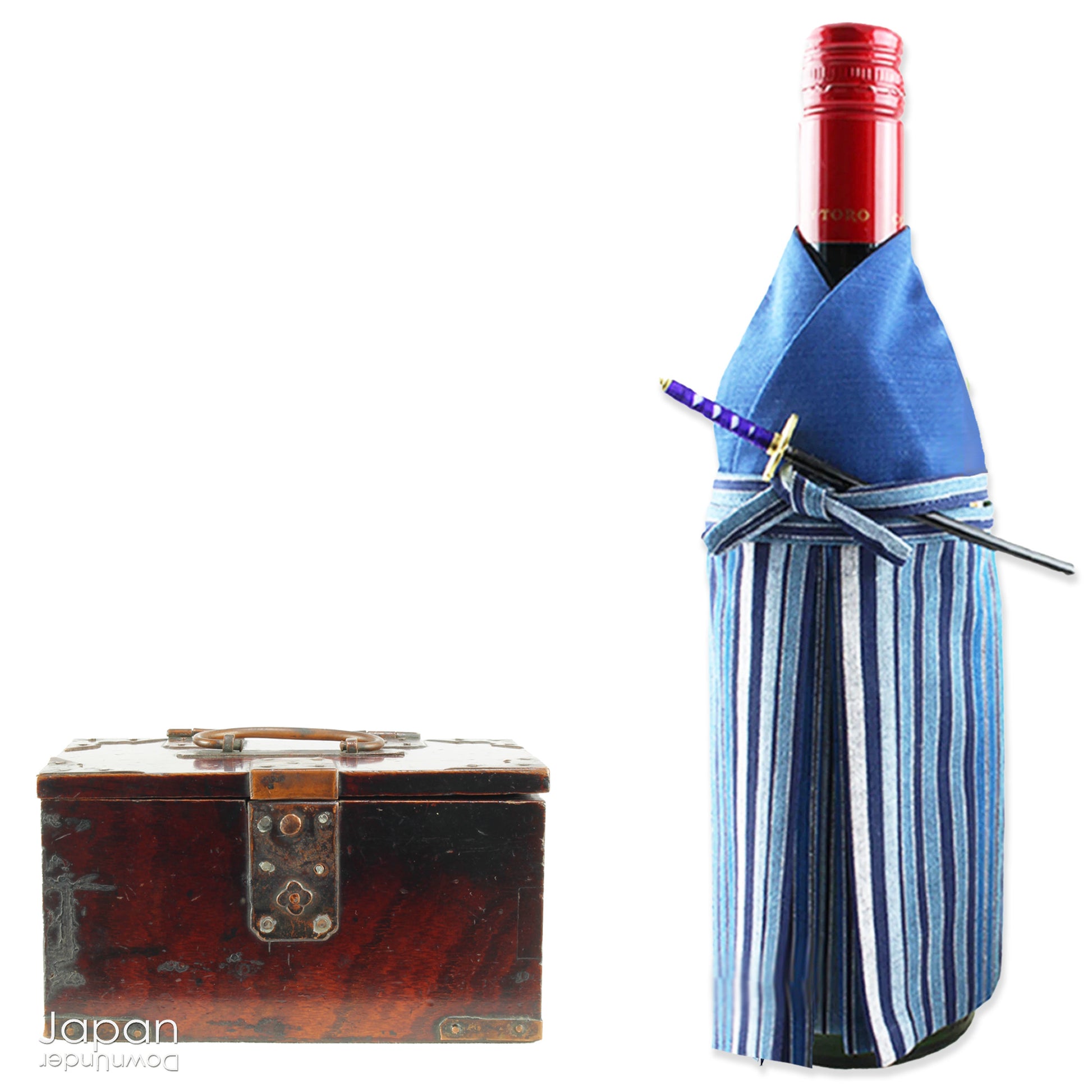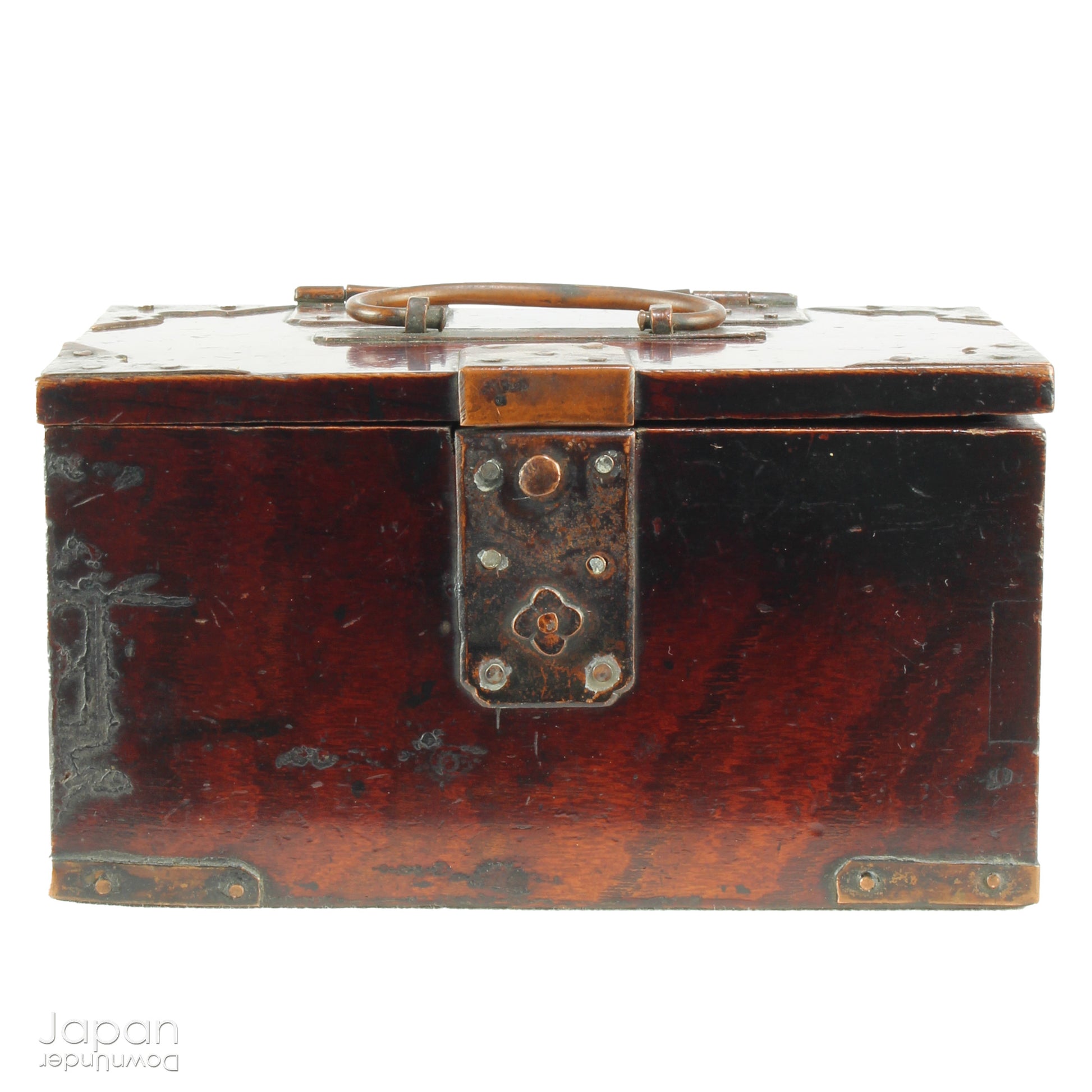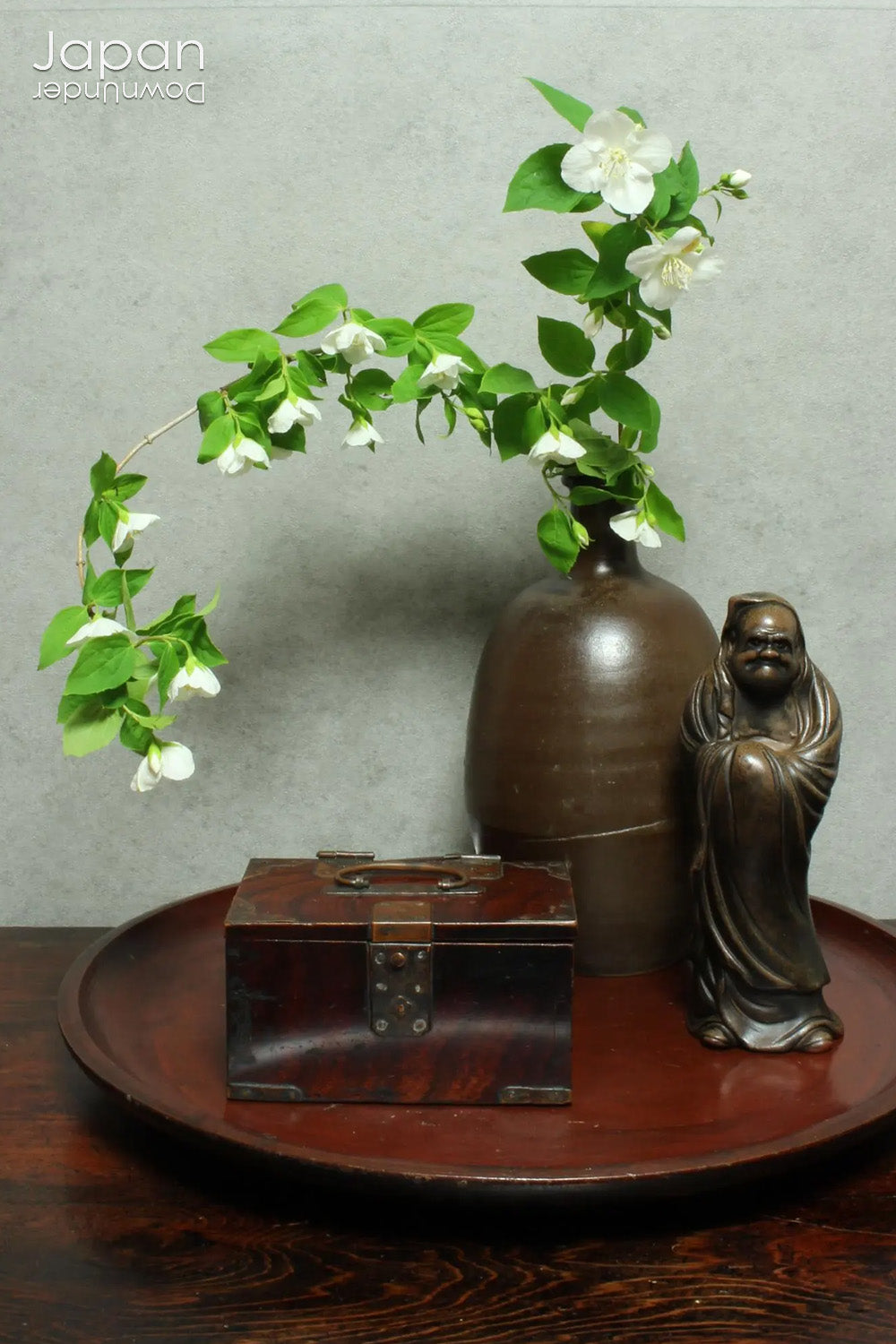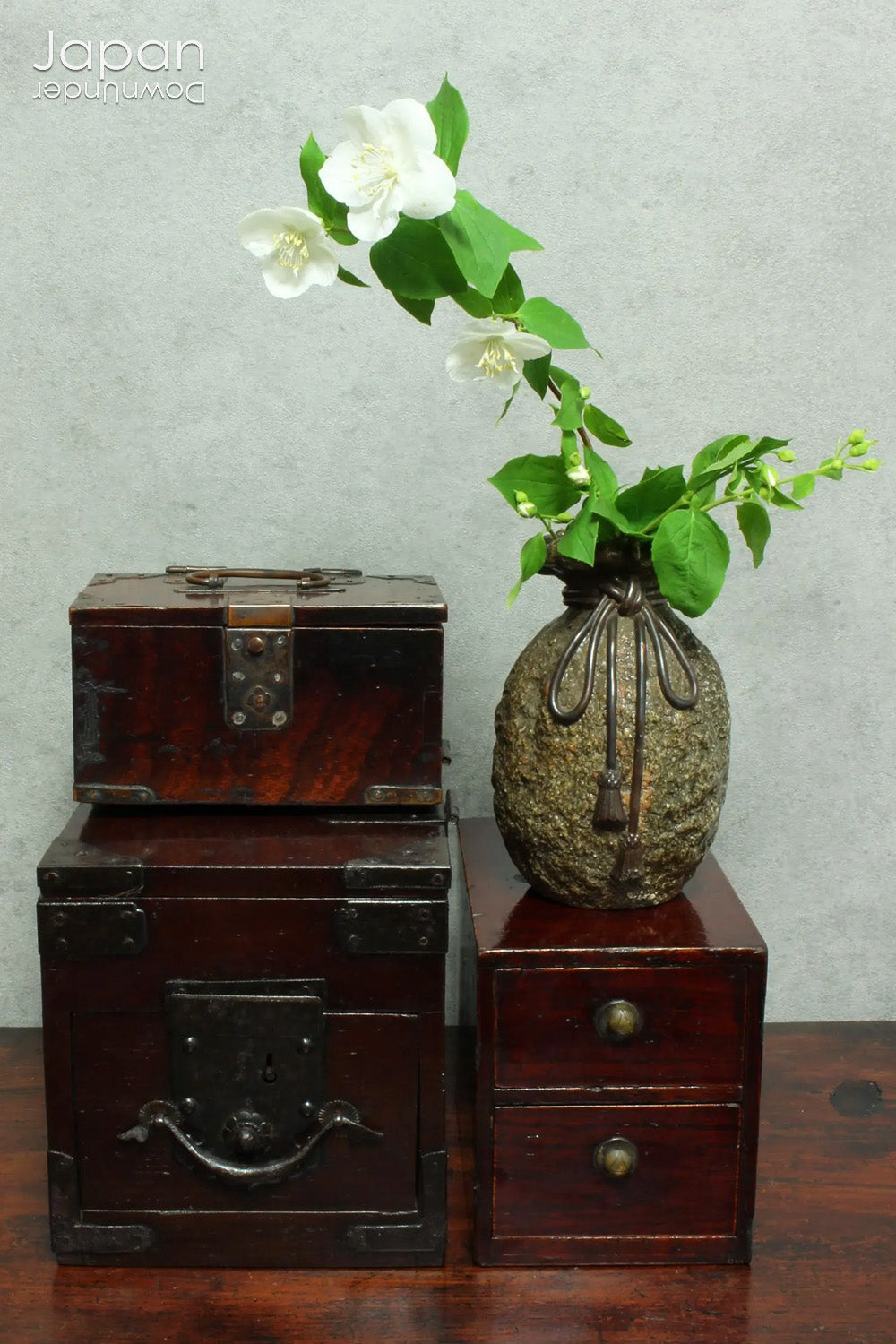JapanDownUnder
antique japanese lacquer seal box - rare find quality keepsake storage
antique japanese lacquer seal box - rare find quality keepsake storage
Couldn't load pickup availability
Love Japanese Style Like We Do
Discover a rare and beautifully aged treasure from the Meiji era (late 1800s) - a small Japanese wooden box that perfectly marries rustic charm with quiet sophistication. Originally designed with purpose and practicality at its core, this piece offers both functional storage and an understated aesthetic appeal, making it an ideal home for your cherished keepsakes or a striking accent in any space.
Rooted in the mingei tradition - Japan’s folk craft movement - this box reflects the deep cultural value placed on everyday objects made with care and skill. Japanese furniture from this era wasn’t created for show, but for service - and yet, in its clean lines and honest materials, a refined beauty emerges.
This particular piece is a rare find: a specialized inkan box, crafted to hold personal seals used in business transactions. Unlike the more commonly seen suzuribako (inkstone boxes), inkan boxes like this were reserved for elite merchants and professionals, making them much less common and highly collectible today.
Handcrafted from prized keyaki (zelkova) wood, the box is finished with a stunning translucent reddish-brown lacquer that allows the intricate wood grain to shine through. It features hand-forged copper hardware - including a working lock, carrying handle, hinges, and protective corner brackets - all gently aged to a rich, complementary patina. A delicate floral motif on the lock plate adds a subtle decorative touch. Inside, the box is divided into two black-lacquered compartments, ideal for storing small valuables. The lid opens by pressing down the front catch and lifting the top handle forward - a clever and satisfying bit of design.
This box carries the visible history of its long life: gentle wear, surface scratches, and a warm patina that only time can bestow. Solid, functional, and full of character, it’s a beautiful embodiment of Japanese folk art - and a meaningful addition to any collection.
- measures around 15 cm (5.9”) ) across x 9 cm (3.5”) deep x 8 cm (3.1”) tall.
- weighs 310 gm.
(listing for seal box only)
SHIPPING INFORMATION
- please read our shipping notes in shipping policy.
- we use recycle packaging and wrap for safety, rather than appearance.
ABOUT OUR VINTAGE, ANTIQUE AND OTHER ITEMS
We list pieces we feel are worthy of display. There may be scratches, dents, fading and signs of wear and tear. We try to explain the condition of each item exactly, but may miss something.
Information regarding the item and it’s age is obtained from dealers and our personal research. We do our best to give you the correct information but please be aware that we cannot guarantee this information.
Please message us prior to purchase with any questions you may have about our products.
ABOUT JAPANESE ANTIQUE FURNITURE
The roots of furniture production in Japan were function. Mastery and skill were evident in Japanese antique furniture but it was conceived of need and was more a folk craft than a fine art. Cabinetry craft developed in response to the demand for useful everyday containers, trunks and chests for totally functional purposes and that is where the true beauty of Japanese furniture lies.
The Japanese lived on tatami mats in small houses. Their artistic aesthetic emphasized minimalism and decorative furniture and personal possessions weren’t acquired like in the West. Antique furniture was basically a large range of storage chests from small sewing boxes to very large chests for storing futons.
It was the lower classes, the merchants, artisans and farmers who created the greatest demand for furniture, for use in their homes, shops and farms. Wherever a need existed, a corresponding cabinet or tansu was developed, leading to the vast array of styles, shapes and sizes in Japanese furniture.
In the Edo and Meiji era clothing tansu with drawers for kimono (isho dansu), sewing boxes (hari bako), vanities (kyodai) and cabinets for tea utensils (cha dansu) and crockery (mizuya dansu) were important items in the home. Wooden safes (zeni dansu) guarded valuables in homes and shops. The upper classes, descendants of samurai families, would have had special order sword chests (katana dansu) and writing desks. Those studying Noh had a costume trunk and a small chest of square dressers for storing masks (nomen dansu).
Sea captains had special chests for storing valuables and documents on board (zeni dansu) The village chemist had a medicine chest (kasuri dansu) with many small drawers. The barber had a tall thin chest (dogu bako) for combs , razors and scissors. There was a special chest for those using hand tools (kanagu dogu bako). A merchant had a small box to store name seals (han bako) and a box to store an abacus, ink stone and brushes (suzuribako) for bills and receipts. Lamp oil was delivered in an oil peddler's box (abura gyosho hako).
These are just a sample of the wonderful array of functional Japanese furniture that can still be used today for storing any items relative to your lifestyle, while at the same time, creating a beautiful interior accent and a reminder of days gone by.
MINGEI
Mingei are the tools and utensils that were used daily by the common people in Japan. They were inexpensive, simple and functional. Usually produced by hand, in large quantities, their artists were anonymous. They became representative of the local area where they were produced.
The word Mingei combines “min” meaning common people and “gei” meaning art - the art of the common people. It was coined by the Japanese philosopher Sōetsu Yanagi. He found beauty in ordinary crafts for daily use and argued that true beauty could be found only in the objects made by unknown people, in a spirit of selfless innocence and in close harmony with nature.
Share











